

John Howkins MICE (1839-1906) was a Scottish harbour engineer closely associated with Granton, Edinburgh.


John Howkins MICE (1839-1906) was a Scottish harbour engineer closely associated with Granton, Edinburgh.

He was born in Granton, Edinburgh in September 1839 the son of John Howkins, civil engineer, (1807-1877) and his wife Mary Collier (1799-1877). He was educated in Edinburgh and apprenticed from 1853 to 1857 to James Leslie, helping him to oversee the repair of the west pier at the harbour of Methil in Fife. He then went to London working in the offices of McClean and Stileman in Westminster. In 1862 he was appointed Resident Engineer at Stranraer Harbour in the same year of its major expansion by creation of the Portpatrick Railway. Here he oversaw the construction of the new low-water steamboat pier serving the new ferry to Ireland. In 1863 he returned to England to oversee the new bridge being built at Weybridge. On the opening of the bridge in 1865 he transferred to the Furness and Midland Joint Railway and built the track section from Wennington to Carnforth. [1] [2]
In 1866 he moved to Barrow-in-Furness to complete the Devonshire Docks. In 1868 he returned briefly to Edinburgh, going to England in 1870 as engineer to the Hartlepool Port and Harbour Commission executing the designs of Thomas Dyke. [1]
He lived at Queensberry Lodge at the edge of Granton near Wardie. [3] He died in Granton on 26 April 1906. He is buried against the south wall of the main Warriston Cemetery, backing onto the Water of Leith Walkway.
He was married to Mary Belk of Hartlepool (1844-1925) daughter of Thomas Belk, town clerk of Hartlepool. [4]
Dean Village is a former village immediately northwest of the city centre of Edinburgh, Scotland. It is bounded by Belford Road to the south and west, Belgrave Crescent Gardens to the north and below the Dean Bridge to the east. It was formerly known as the "Water of Leith Village" and was a successful grain milling area for more than 800 years. At one time there were no fewer than eleven working mills there, driven by water from the Water of Leith.

James Walker was an influential British civil engineer.

Granton is a district in the north of Edinburgh, Scotland. Granton forms part of Edinburgh's waterfront along the Firth of Forth and is, historically, an industrial area having a large harbour. Granton is part of Edinburgh's large scale waterfront regeneration programme.
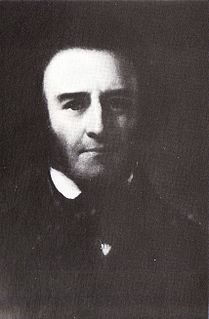
James Meadows Rendel FRS was a British civil engineer.
Mary Crudelius was a British campaigner for women's education who lived in Leith, Edinburgh in the 1860s and 1870s, and was a supporter of women's suffrage. She was a founder of the Edinburgh Association for the University Education of Women.
The Edinburgh and Northern Railway was a railway company authorised in 1845 to connect Edinburgh to both Perth and Dundee. It relied on ferry crossings of the Firth of Forth and the Firth of Tay, but despite those disadvantages it proved extremely successful. It took over a short railway on the southern shore of the Forth giving a direct connection to Edinburgh, and it changed its name to the Edinburgh, Perth and Dundee Railway.
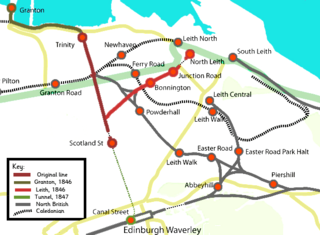
The Edinburgh, Leith and Newhaven Railway was a railway company formed in 1836 to connect the city of Edinburgh with the harbours on the Firth of Forth. When the line connected to Granton, the company name was changed to the Edinburgh, Leith and Granton Railway. It opened part of its route in 1846, but reaching the centre of Edinburgh involved the difficult construction of a long tunnel; this was opened in 1847. It was on a steep incline and was worked by rope haulage.

Thomas Grainger FRSE was a Scottish civil engineer and surveyor. He was joint partner with John Miller in the prominent engineering firm of Grainger & Miller.

John Miller of Leithen FRSE MICE DL was a Scottish civil engineer and Liberal Party politician. Together with Thomas Grainger, he formed the influential engineering firm Grainger and Miller, specialising in railway viaducts.

James Jardine was a Scottish civil engineer, mathematician and geologist. He was the first person to determine mean sea level. He built tunnels and bridges, including for the Innocent Railway, and built reservoirs including Glencorse, Threipmuir, Harlaw for Edinburgh Water Company, and Cobbinshaw for the Union Canal.
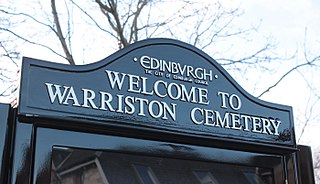
Warriston Cemetery is a cemetery in Edinburgh. It lies in Warriston, one of the northern suburbs of Edinburgh, Scotland. It was built by the then newly-formed Edinburgh Cemetery Company, and occupies around 14 acres (5.7 ha) of land on a slightly sloping site. It contains many tens of thousands of graves, including notable Victorian and Edwardian figures, the most eminent being the physician Sir James Young Simpson.
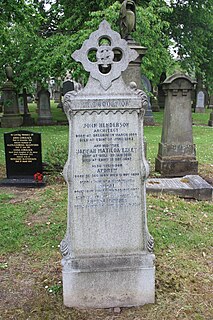
John Henderson was a Scottish architect operational in the mid-19th century. He is chiefly remembered as a church architect, with his early work being in the Gothic revival and tractarian style, before developing his own distinct style.

Sir James Falshaw, 1st Baronet JP, DL, FRSE, was a British railway engineer and politician.
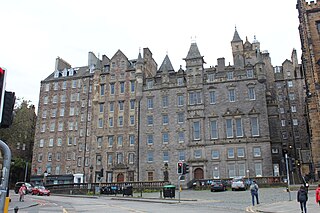
David Cousin was a Scottish architect, landscape architect and planner, closely associated with early cemetery design and many prominent buildings in Edinburgh. From 1841 to 1872 he operated as Edinburgh’s City Superintendent of Works.
Events from the year 1811 in Scotland.
Events from the year 1816 in Scotland.

Trinity Chain Pier, originally called Trinity Pier of Suspension, was built in Trinity, Edinburgh, Scotland in 1821. The pier was designed by Samuel Brown, a pioneer of chains and suspension bridges. It was intended to serve ferry traffic on the routes between Edinburgh and the smaller ports around the Firth of Forth, and was built during a time of rapid technological advance. It was well used for its original purpose for less than twenty years before traffic was attracted to newly developed nearby ports, and it was mainly used for most of its life for sea bathing. It was destroyed by a storm in 1898; a building at the shore end survives, much reconstructed, as a pub and restaurant called the Old Chain Pier.
William Hurst (1810-1890) was a Scottish civil engineer noted for his involvement in early railway construction in Britain.
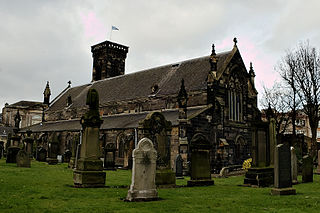
James Grant FRSE DD DCL was a Scottish minister. Combining his religious skills with business skills he was also Director of Scottish Widows for 50 years and Moderator of the General Assembly of the Church of Scotland in 1854. During his period as Moderator he was styled as Right Rev James Grant and thereafter as Very Rev James Grant.
James Leslie FRSE was a Scottish civil engineer specialising in docks, harbours bridges and reservoirs, largely on the east coast of Scotland. He was also an amateur meteorologist.